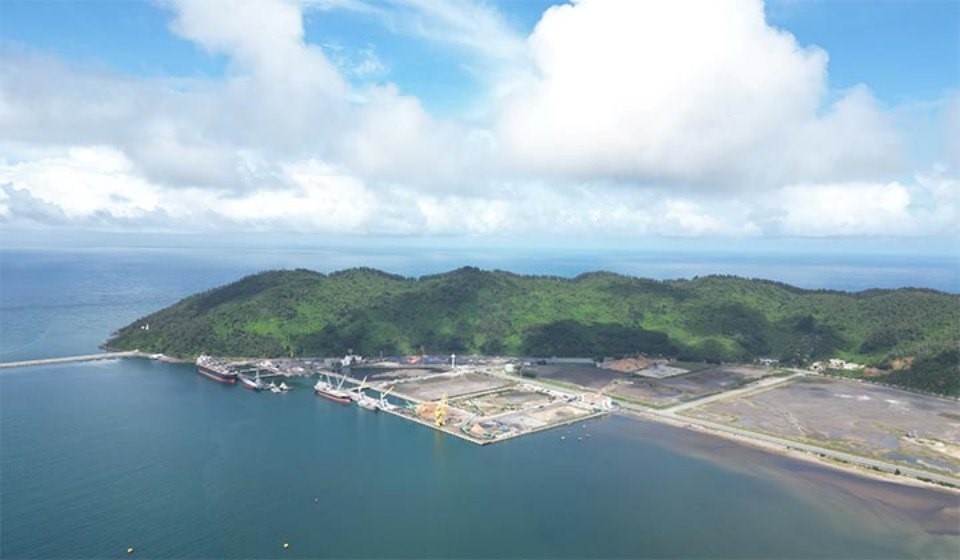Các mặt hàng xuất khẩu chủ lực gặp khó, sụt giảm mạnh
(KTSG Online) – Hàng loạt ngành hàng chủ lực hoặc hàng hóa có giá trị lớn từ Việt Nam xuất đi nhiều nước bị sụt giảm nhiều trong tháng 9 vừa qua, phần nào phản ánh bức tranh thị trường mua hàng quốc tế đang gặp khó khăn.

Báo cáo cập nhật mới nhất của Tổng cục Hải quan cho thấy hầu hết xuất khẩu các nhóm hàng trong tháng 9-2022 đều suy giảm so với tháng trước đó, trong đó giảm mạnh nhất là nhóm hàng dệt may, giày dép, đồ gỗ, điện thoại các loại và linh kiện…
Đáng chú ý là các nhóm mặt hàng mà doanh nghiệp thuần Việt tham gia sản xuất nhiều bị sụt giảm mạnh. Đơn cử như nhóm mặt hàng may mặc, trị giá xuất khẩu trong tháng vừa qua chỉ đạt 2,72 tỉ đô la, giảm đến 31,9% so với tháng trước, tương ứng giảm 1,28 tỉ đô la.
Tương tự, trị giá xuất khẩu gỗ và sản phẩm đồ gỗ trong tháng 9 vừa qua là 1,11 tỉ đô la, giảm 21%; trong khi ngành giày dép các loại xuất khẩu sụt giảm hơn nửa tỉ đô la… so với tháng trước đó.
Hay sản phẩm sắt thép các loại, theo thống kê của Tổng cục Hải quan, trong cùng tháng nói trên, trị giá xuất khẩu đạt 429 triệu đô la, giảm 6,2% và trở thành tháng thứ 3 liên tiếp trị giá xuất khẩu nhóm mặt hàng này bị sụt giảm.
Trên thực tế, trước đó các doanh nghiệp xuất khẩu các ngành hàng này cũng đưa ra thông tin xuất khẩu đang bị sụt giảm mạnh, nhiều nhà nhập khẩu đã hủy đơn hàng đã đặt hoặc cắt giảm lượng nhập khẩu khá lớn do nhiều thị trường xuất khẩu chủ lực ở các nước như Mỹ, EU… lạm phát tăng cao và kinh tế còn khó khăn.
Không chỉ xảy ra đối với những mặt hàng nói trên, mà theo số liệu thống kê của cơ quan hải quan, các nhóm hàng hóa có giá trị xuất khẩu lớn hoặc do các doanh nghiệp có vốn đầu tư nước ngoài sản xuất chiếm đa số, trong cùng thời gian nói trên tình hình xuất khẩu cũng bị giảm nhiều.
Đơn cử như nhóm hàng hóa có giá trị xuất khẩu nhiều nhất là điện thoại các loại và linh kiện trong tháng vừa qua bị giảm đến 18,1% (giảm đến 1,1 tỉ đô la) so với tháng trước đó, đạt trị giá gần 5 tỉ đô la.
Hay xuất khẩu nhóm hàng máy móc, thiết bị, dụng cụ và phụ tùng trong tháng vừa qua đạt 4,15 tỉ đô la, giảm 7,7% so với tháng trước đó.
Tính chung, theo cơ quan hải quan, trị giá xuất khẩu hàng hóa cả nước trong tháng 9 vừa qua đạt 29,82 tỉ đô la, giảm 14,6% so với tháng trước, tương ứng giảm 5,1 tỉ đô la về số tuyệt đối.
Báo cáo về chỉ số nhà quản trị mua hàng (PMI) ngành sản xuất Việt Nam của S&P Global thực hiện được HS Markit công bố hôm 3-10, cho thấy tốc độ tăng số lượng đơn đặt hàng mới từ nước ngoài là chậm nhất trong mười tháng và tồn kho hàng thành phẩm của doanh nghiệp tăng cao nhất trong gần một năm rưỡi.
Các doanh nghiệp thuộc nhiều ngành hàng cho rằng kinh doanh bị sụt giảm trên là do tình hình chung của thế giới do kinh tế khó khăn, lạm phát tăng cao và sự sụt giảm về sức tiêu thụ vẫn sẽ còn tiếp tục kéo dài trong những tháng cuối năm hoặc có thể qua đến hết quí 1-2023.
Trong tương lai, nếu những xung đột trên thế giới kết thúc và lạm phát được kéo giảm thì tình hình có thể sẽ khá hơn.
Tính gộp cả năm, xuất siêu 6,76 tỉ đô la

Do trong hơn nửa thời gian của năm 2022, tình hình chung về xuất khẩu các ngành hàng tăng cao giá trị xuất khẩu của Việt Nam qua 9 tháng vẫn trụ ở mức cao và thặng dư thương mại đạt 6,76 tỉ đô la.
Theo số liệu của Tổng cục Hải quan, tính trong 3 quí/2022, tổng trị giá xuất nhập khẩu hàng hóa của Việt Nam đạt 557,93 tỉ đô la, tăng 15% (tương ứng tăng 72,7 tỉ đô la) so với cùng kỳ năm 2021.
Trong đó, trị giá xuất khẩu là 282,35 tỉ đô la, tăng 17,2%, tương ứng tăng 41,46 tỉ đô la so với cùng kỳ năm trước; trị giá nhập khẩu là 275,58 tỉ đô la, tăng 12,8%, tương ứng tăng 31,26 tỉ đô la. Như vậy, mức thặng dư thương mại hàng hóa của Việt Nam trong 9 tháng đầu năm nay là 6,76 tỉ đô la.


















